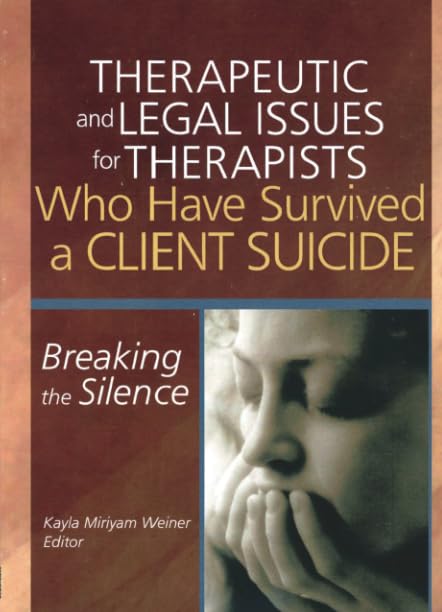Therapeutic and Legal Issues for Therapists Who Have Survived a Client Suicide

The line went dead. It wasn’t a client who had hung up but a colleague, but the news was no less ominous. A client had died, and they had just finished telling the clinician. At that moment, they realized they had no idea what to do next. Therapeutic and Legal Issues for Therapists Who Have Survived a Client Suicide hopes to provide a map for what to do next.
Legal Advice
I’m not an attorney – and this isn’t legal advice. I can, however, flag a place where an attorney’s immediate reaction of not talking to anyone is not always the best answer for the clinician personally or for the overall legal risk. In Effective Apology, John Kador shares some of the research that indicates a simple apology can reduce medical malpractice. The one thing that attorneys would tell you not to do is the thing that can make a big difference.
Some families will want to blame a clinician – and others will want to know that the clinician cares. Engaging in the right way with the family, including honoring their wishes about participating or not participating in memorial services, can go a long way towards humanizing the experience and reducing the chances that they’ll blame the clinician.
The other piece of advice that attorneys will often share is that you not speak with about the situation with anyone. The problem is that this cuts you off from your professional support resources at the very time you need them most. It’s important to consider that your colleagues could be called into court – but what happens to you if you don’t have ways of processing the loss?
Forcibly Alive
There’s a narrative that some people have around suicide prevention that the clinician should be all powerful and somehow compel a patient to remain alive. This is not truth. In Suicide: Inside and Out, the ease with which someone could die should they be determined to was made clear. Suicide contracts fell out of favor, because they weren’t effective at keeping patients alive.
The simple fact is that the individual is ultimately in control of their life and their death. No third party can or should take that responsibility.
Suicide Doesn’t Mean You Did Something Wrong
In the aftermath of a suicide death, it’s easy to believe that you must have done something wrong. It’s easy to confuse undesirable outcomes with a mistake being made. Even in cases where it is possible to think that you could have prevented the suicide the one moment that it occurred, there’s no evidence that the outcome wouldn’t just happen in a week or a month. We simply can’t know.
Our natural tendency is to want it to be something we did wrong so we can change it. It’s so much better than thinking that we are sometimes powerless to stop it.
Supervision
Clinicians who are under supervision are particularly vulnerable to questioning their value and whether they’re in the right profession. Often times, new clinicians are bought into the omnipotence of the profession and haven’t yet learned that there are some things that cannot be helped.
Unfortunately, some supervisors feel discomfort themselves as one of their supervisees loses a patient to suicide. They question themselves, and they’re uncomfortable to the point where they don’t create the right kind of space to allow supervisees to process their grief, loss, and confusion.
The Search for Why
All people who are left behind a suicide death need to be able to figure out “why.” We’re sense-making machines, and suicide is so senseless. Whether family member or clinician, there is a very real need to determine why – and often there are no satisfactory answers.
Sometimes, the best we can do is be aware of the Therapeutic and Legal Issues for Therapists Who Have Survived a Client Suicide.
